Storyboard Templates
-

Project Storyboard Template
download now -
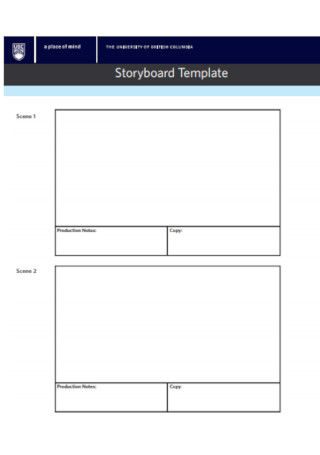
University Storyboard Template
download now -

Storyboard Planning for Stop Motion Animation
download now -

Campus Blank Storyboard Template
download now -

Sample Storyboard Template
download now -

Animation Story board Template
download now -

School Staff Storyboard Template
download now -
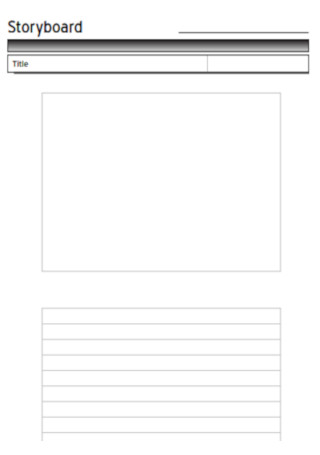
Titile Storyboard Template
download now -

Scripting and Story boarding Template
download now -

Tv Ratio Storyboard Template
download now -

Education Story Board Template
download now -

Simple Storyboard Template
download now -

Sample Recruiting Storyboard Template
download now -
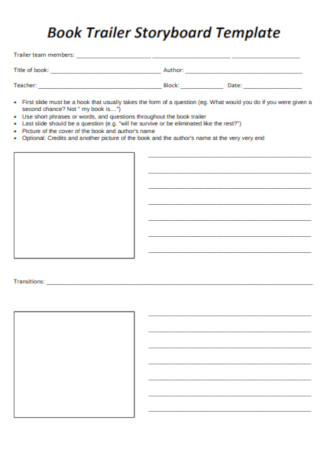
Book Trailer Storyboard Template
download now -

Sample Planning Storyboard template
download now -

Sample Story Boarding Template
download now -

Sample Script Storyboard Template
download now -

Storyboard Template for Salmon Boy
download now -

Production Storyboard Template
download now -

Social Media Storyboard Template
download now -

Video Storyboard Template
download now -

Storyboard Worksheet Template
download now -

Film and Animation Storyboards Template
download now -

Arts in Action Storyboard Template
download now -
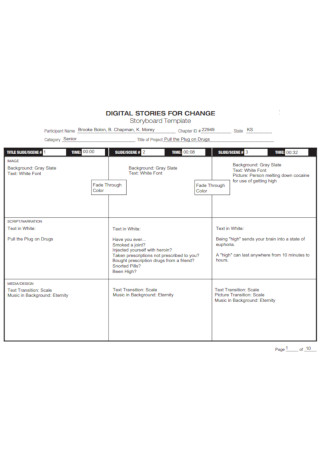
Digital Stories for Change Storyboard Template
download now -

Project Initiation Storyboard Template
download now -

Movie for iPad Printable Storyboard Template
download now -

Official Storyboard Template
download now -

Snapchart Storyboard Template
download now -

Picture Book Storyboard Template
download now -

Shooting Script Storyboard Template
download now -

Storyboard Template for Sequencing
download now -

Simple Storyboard Example
download now -
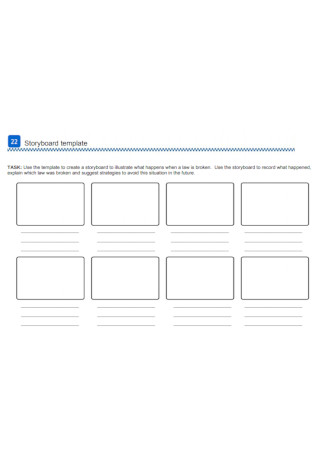
Basic Storyboard Template
download now -

Storyboard and Animatic Animation Template
download now -

Storyboard Consulting Template
download now -

Sample Project Storyboard Template
download now -
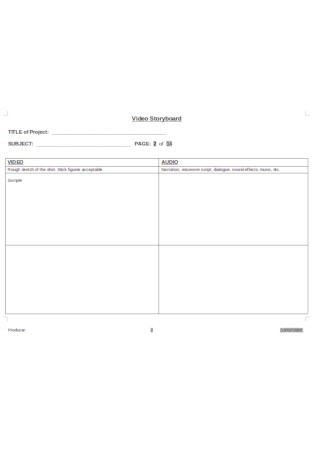
Formal Video Storyboard Template
download now -

Video Production Planing Storyboard Sheet Template
download now -

Printable Storyboard Template
download now
FREE Storyboard s to Download
Storyboard Templates
What Is a Storyboard?
The Mediums of Art: When to Use a Storyboard
The Artists: Audiences of a Storyboard
How to Create an Effective Storyboard
FAQs
Are storyboards necessary when I’m making a movie?
Can my storyboard have more than four frames on the form?
How many seconds does each frame represent in a standard storyboard?
Can I follow a script when making a storyboard?
What Is a Storyboard?
Visual representation plays an essential role in capturing the entirety of a plan, concept, or decision. Sometimes the usage of words and phrases cannot be enough to express the full meaning of an idea, and that’s when optical art comes into the picture. Take, for instance, the economic concept called Tragedy of the Commons popularized by American philosopher Garrett Hardin in 1968. The basis of the theory revolves around the limited resources human beings have and what can be done to counter problems of scarcity. People, especially educators and economists, use diagrams and animations to show the relevance of the concept.
With the help of outlines and storyboards, these people can fully explain their intended message to the audience. In simple terms, a storyboard contains sets of documents—usually in pieces of paper—displaying the lists of images or drawings that continue in a sequence. The storyboard acts as a guide to assist directors, cinematographers, animators, speakers, and artists for visual presentations. In most cases, storyboards are drafts of plans that contain more than one underlying message.
In 2019, seventy-seven (77) animated feature films got released to the public, and three of those grossed over $1 billion. The distributor of the three movies—Toy Story 4, Frozen II, and The Lion King—was Walt Disney Pictures
Statista records the U.S. as the third largest film market in the world in terms of annual ticket sales ranking behind China and India.
As of 2017, there were about 5,750 cinema sites in the U.S.

The Mediums of Art: When to Use a Storyboard
The entertainment industry continues to grow and bloom every year. Whether viewers choose to watch movies by going to cinemas or view films via video streaming applications, the sector remains one of the most impressive industries in the world. In 2019, seventy-seven (77) animated feature films got released to the public, and three of those grossed over $1 billion. The distributor of the three movies—Toy Story 4, Frozen II, and The Lion King—was Walt Disney Pictures. Besides the feature films, the studio also produced four other movies that went beyond the one billion mark. But besides these motion pictures, what other needs a storyboard?
The Artists: Audiences of a Storyboard
As mentioned before, storyboards have been aiding various individuals to complete the required tasks. From authors to screenwriters, a storyboard is an essential tool to have when getting ready for work. In particular, directors and their videographers or set assistants need storyboards to organize the scenes and flow of the movie. Now, according to the Indie Wire, Steven Spielberg tops the highest-grossing directors’ list for 2018. The celebrated personality directed several famous Indiana Jones movies and the thriller film, Jaws. In record, Spielberg has a lifetime gross of over $10 billion. Yes, the director should have a storyboard. But who else needs it?
Film Director
The first person to view or make a storyboard is the director. He or she creates the scene with preference to the story and accompanied by specific dramatic effects. Based on the script written by screenwriters, the director makes a draft of scenes that reenacts the necessary parts of the story. Whether the outline of the narrative comes from the director or not, the task goes to the individual managing the whole production, particularly the flow of movie scenes.
Cinematographer
Together with the director, the cinematographer plays a crucial role in the formation of the film. Also known as the director of photography, the person directs angles and shots to match the desired output of the film director. Importantly, he or she needs to have a hand in deciding some parts of the storyboard to make sure everything runs smoothly.
Film Producer
The film producer often has the last say when it comes to many aspects of the movie. In many instances, producers can opt to change the music score, props, and even artists in the set. Besides controlling the overall state of the production, they also see storyboards to know the direction of the feature film. With that, directors and writers plan with the producer to ensure the quality and purpose of the film.
Production Crew
Instead of leaving the production crew in the dark, film directors have to provide sufficient material to the people. As a simple rundown of events, the staff receives the storyboard for the scenes to complete for the week. On the other hand, the post-production team has the storyboard as one of the guides when editing the work.
Writer
For this part, the writer can be either of the following: author, dramatist, or scriptwriter. So, writers make storyboards to categorize or arrange the flow of information needed by the document. Without a structure, the writer will spend more time in deciding which part goes first and what details should be last. In a way, storyboards save time for many people.
How to Create an Effective Storyboard
Storyboards can come with a variety of features depending on the requirements of the creators. There are formats with four squares, and then, others six or eight boxes. The effort in choosing the form lies in the hands of the designer and the writer. Moreover, they also should consider the duration of the film, video, or material they need to create. So, what are the steps in creating an effective storyboard to use for work?
Step 1: Organize the Storyline or Concept
In making the storyboard, the first step should be mapping out the storyline. Get the details of the story and make sure all essential elements are present in the notes. When you have the information, composing the storyboard—particularly on crucial turning points and climatic events—will be an easy thing to complete. If in doubt, contact the screenwriter or talk with the person in charge of the ideas for the narrative.
Step 2: Doodle the Stages
Instead of immediately using the form or drawing on the storyboard, you should doodle the desired outcome. To be more efficient, you can make stages in the progression of the material. From there, start scribbling notes and additional information that will be relevant to the scenes or shots. Craft the initial look and be creative with the content.
Step 3: Check and Critique the Material
When finished, you can check the contents and have someone critique the storyboard. Some recommend that letting producers and cinematographers check the material has its benefits. That said, be sure that these individuals have access to the storyboard and list down the corrections or additions they have for the document. If none arise, then you can move forward.
Step 4: Add or Take Out Necessary Details
After the feedback from other people, you can redo the storyboard or add the extensions. Remember that there’s always more room for improvement when it comes to forming the storyboard. If it lacks information or has little details, include more. When the contents are too much or irrelevant, take it out.
Step 5: Finalize the Parts
And lastly, finalize everything on the storyboard before starting the production. When the document is flawless and complete, it’s time to begin the shooting. If some parts require changes in the storyboard, the person-in-charge can handle the revisions to match the final output demanded by the executives and managers.
FAQs
Are storyboards necessary when I’m making a movie?
Although not a requirement, most directors and creators use storyboards to provide a rundown of scenes for the production team. Its efficiency as a visual material helps these people make the task of recording easier. The tool becomes particularly important when the film focuses on fast-paced cuts and direction. Thriller and horror movies can utilize storyboards to plot out when to place the next jumpscare and plot twists.
Can my storyboard have more than four frames on the form?
The standard form of a storyboard has four to six frames. But in many cases, the frames are dependent on the creative director and writer. Sometimes, it also relies on the concept of the material. Despite this, storyboards need to have sufficient space for the people writing on the tool.
How many seconds does each frame represent in a standard storyboard?
In general, a single shot illustrated in one frame of the storyboard equates six seconds for a video shoot. That means an advertisement lasting for 1 minute needs at least ten shots. Do note that estimates can change with the demands and agreements of the creators. Placing a timeframe on the storyboard can be an efficient way to provide details.
Can I follow a script when making a storyboard?
Directors and writers should have a copy of the script whenever constructing the storyboard. In this way, they can realign the plots and challenges of the screenplay while creating the visuals. Furthermore, the task will be easy when a manuscript is available for the people drafting the material.
The creation of a masterpiece involves time, effort, and a whole lot of patience. Determination, coupled with the right dose of attitude and endurance, will be the winning combination to complete any task or project that comes your way. In the practice of producing new forms of art for varying audiences, artists use different tools to accomplish what needs to be done. And storyboards top the list of the items that should be in the bags of art molders, creators, and directors.
